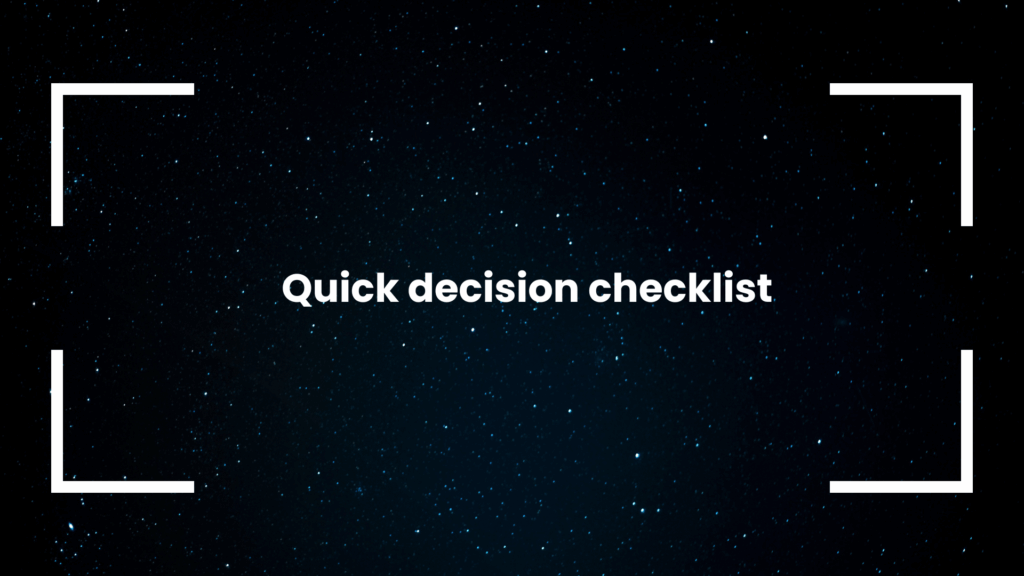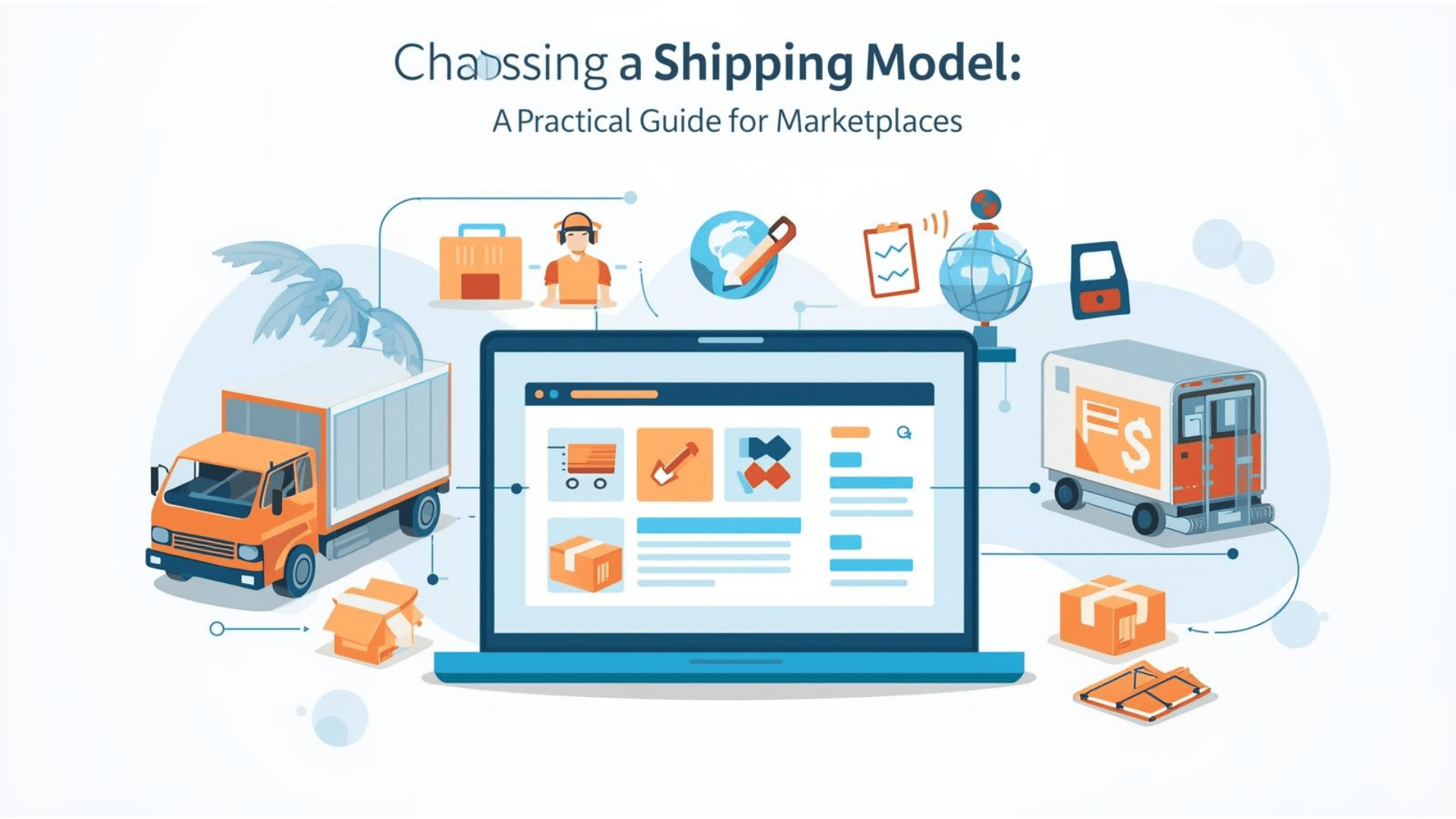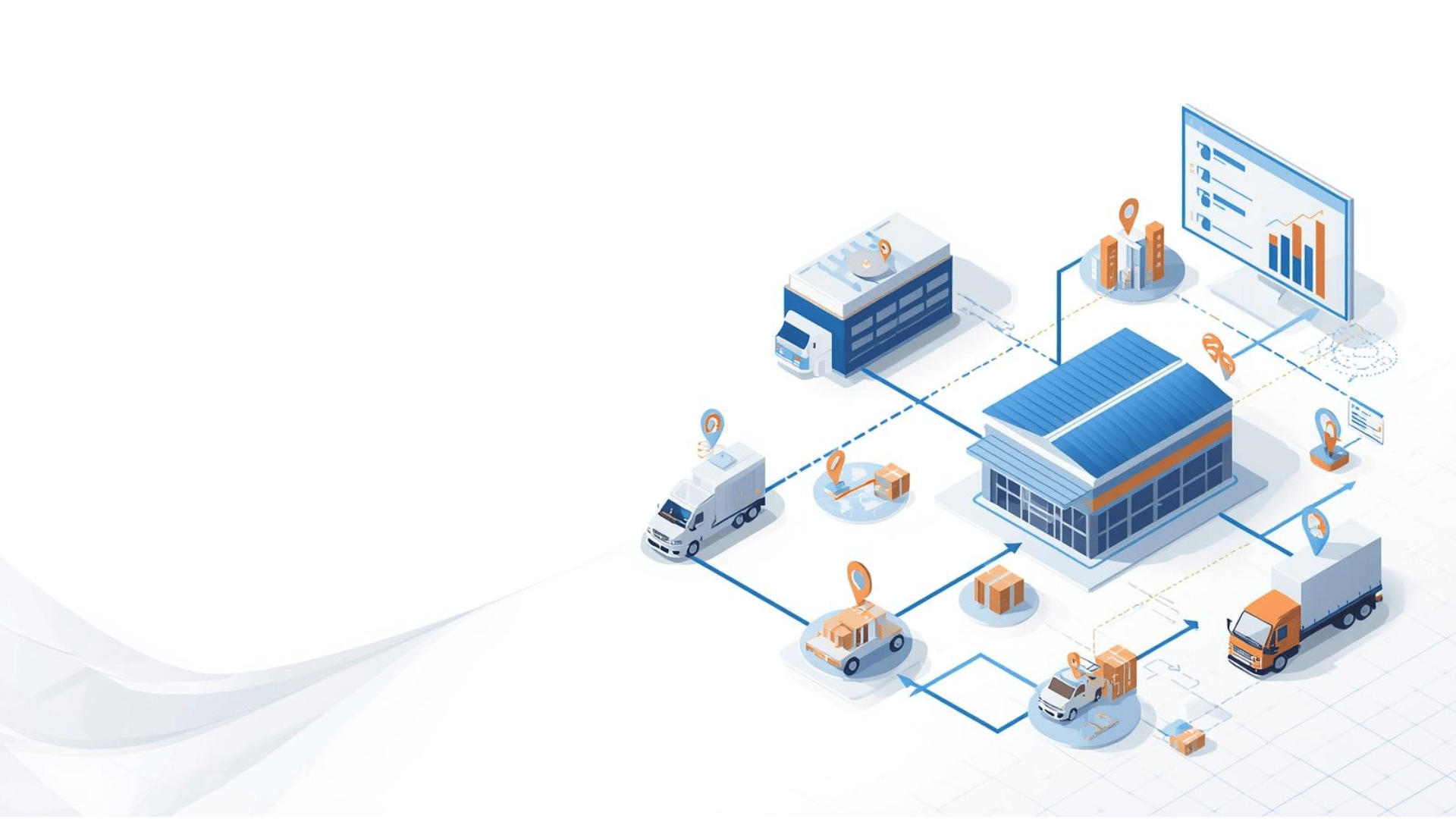Why choosing a shipping model matters
- Shipping is a top lever for conversion, repeat purchases, and brand trust.
- The “right” model depends on product type, order volume, delivery promises, returns policy, team capacity, and cash flow.
- Good planning now saves you from expensive pivots later.

What to consider before you decide
- Product realities: size/weight, fragility, perishability, shelf life, hazmat rules.
- Order patterns: average order volume, spikes/seasonality, multi-item carts.
- Speed vs. cost: your delivery promise (same-day, next-day, standard) and budget.
- Inventory footprint: single warehouse vs. multiple nodes vs. no inventory.
- Returns handling: who inspects, restocks, refunds, and how fast.
- Branding: need for custom packaging or inserts.
- Team & tools: who will run the ops, and what tech stack you’ll use.

The three common models (and when they shine)
1) Dropshipping
How it works: Your sellers ship directly to the customer.
Best for: Launch stage, low capital, broad catalog without holding stock.
Pros
- No warehouse or pre-purchasing.
- Easy to test new SKUs/categories.
Cons - Limited control over speed/packaging.
- Stockouts and variable quality risk.
- Scaling across many suppliers gets messy.
Use if…
- You want rapid assortment testing with minimal upfront cash.
- Speed/branding is secondary to catalog breadth at early stage.
2) Self-fulfillment (in-house)
How it works: You own the inventory and shipping ops.
Best for: Tight quality control, custom packaging, high-margin SKUs.
Pros
- Full control over SLAs, packaging, and unboxing.
- Better visibility into stock accuracy.
Cons - Capex/opex for space, staff, supplies, software.
- Complexity grows fast with volume and multi-node needs.
Use if…
- Brand experience and tight QC are core differentiators.
- You have stable volume to justify fixed costs.
3) Third-Party Logistics (3PL)
How it works: A logistics partner stores, picks, packs, ships, and handles returns.
Best for: Fast scaling, multi-location shipping, predictable SLAs.
Pros
- Professional ops, faster ramp, zonal coverage.
- Variable cost model with bulk-rate advantages.
Cons - Per-unit fees add up at low volume.
- You still need process discipline (SOPs, SLAs, audits).
Use if…
- You need speed, coverage, and predictable service without building a warehouse team.
- Orders are consistent enough to negotiate better rates.

Quick decision checklist
- Low capital, wide catalog? Start with Dropshipping.
- Premium brand, custom packaging, high AOV? Go Self-fulfillment.
- Need speed + scale + multi-region coverage? Choose a 3PL.
- Hybrid reality? Mix models (e.g., in-house for hero SKUs, 3PL for long-tail, dropship for experimental items).
Cost levers you can actually control
- Packaging optimization: right-size boxes to reduce DIM weight.
- Pick/pack design: zone picking, batch picking for top SKUs.
- Shipping mix: ground vs. air; use regional carriers where it makes sense.
- Inventory placement: forward-position fast movers to cut zones and transit time.
- Returns rules: automate label generation, clear windows, graded restocking.
Tech stack tips (for WordPress marketplaces)
- Vendor onboarding, policies, and catalog control are easier with WCFM.
- Upgrade path: WCFM Ultimate
- Guides:
- Upgrade path: WCFM Ultimate
- Planning content and CRO around discovery? Try:
- Personalized Recommendations
- Compare platforms: WCFM vs Dokan
- Personalized Recommendations
- Bigger picture reads to round out your plan:
Need help tailoring shipping ops to your stack? Talk to us — we’ll map your catalog, SLAs, and costs, then recommend the best model (or hybrid) for your stage.
Example hybrid setups (realistic patterns)
- Launch: Dropship most SKUs; self-fulfill hero product bundles with branded packaging.
- Scale-up: 3PL for top regions; keep fragile SKUs in-house; pilot new suppliers via dropship.
- Mature: Multi-node 3PL network + micro-fulfillment in metro areas; strict SLA tiers.
Implementation roadmap (4 steps)
- Model fit: Score each model on speed, cost, control, and complexity for your catalog.
- Pilot: Run a 4–6 week trial (sample SKUs, limited regions). Track SLA, cost/order, return rate.
- Standardize: Document SOPs for exceptions (partial shipments, split orders, returns).
- Optimize: Rebalance inventory placement quarterly; revisit carrier mix and packaging each season.
FAQ — choosing a shipping model
What’s the single biggest mistake brands make?
Picking a model for today’s volume, not next quarter’s. Plan a path to scale or hybridize.
Can I switch later without chaos?
Yes—if you document SKUs, barcodes, cartonization rules, and returns SOPs early. That makes migrations smoother.
Are 3PLs always cheaper than in-house?
Not always. 3PLs win on speed/coverage at mid-to-high volume; very low volume can favor dropship or nano in-house.
How do I estimate shipping costs before I choose?
Model 10–15 representative orders. Include pick/pack, materials, DIM weight, surcharges, and return handling.
What about international shipping?
Start with test lanes. Confirm duties/taxes (DDP vs. DDU), restricted items, and returns flows before scaling.
We’ll help you pick (or blend) the right model for your marketplace.

Want a tailored recommendation and SOPs your team can run tomorrow?
The #1 WordPress & Woo agency




